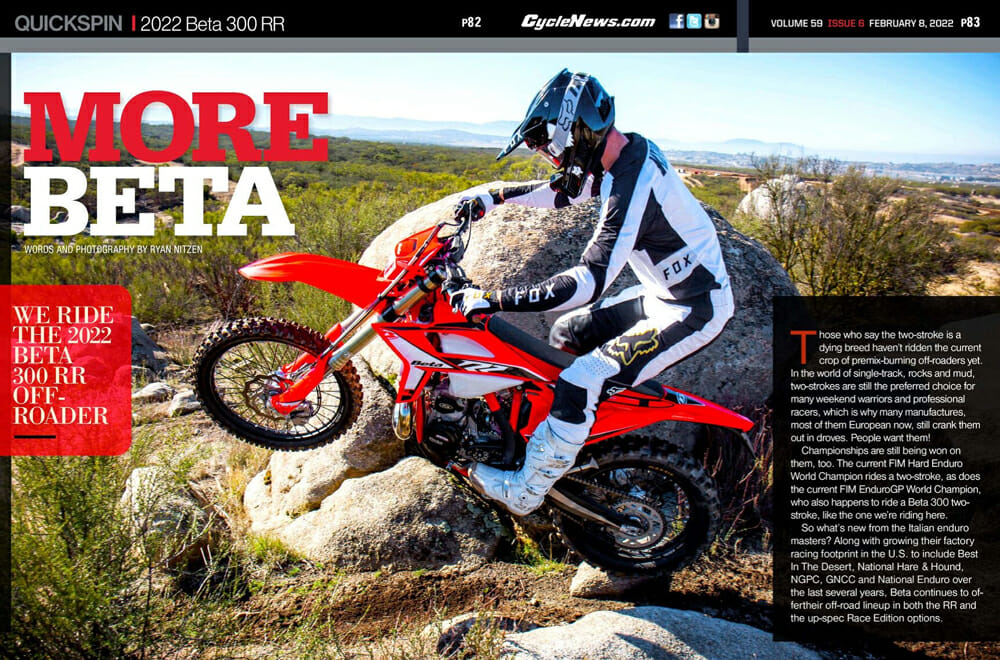Ryan Nitzen | February 10, 2022
Those who say the two-stroke is a dying breed haven’t ridden the current crop of premix-burning off-roaders yet. In the world of single-track, rocks and mud, two-strokes are still the preferred choice for many weekend warriors and professional racers, which is why many manufactures, most of them European now, still crank them out in droves. People want them!
Championships are still being won on them, too. The current FIM Hard Enduro World Champion rides a two-stroke, as does the current FIM EnduroGP World Champion, who also happens to ride a Beta 300 two-stroke, like the one we’re riding here.
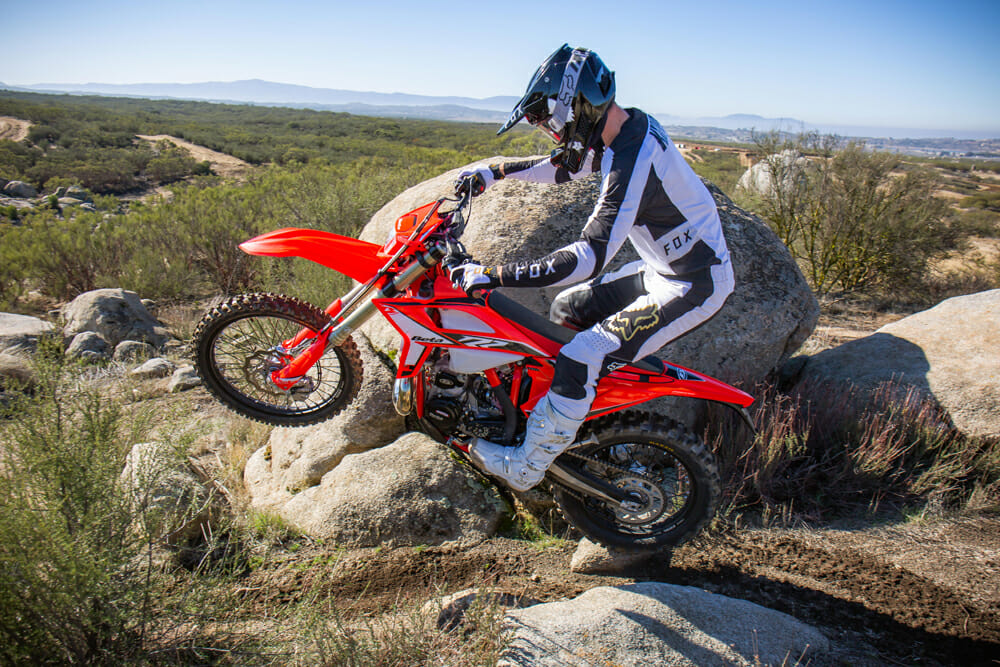
Words and Photography by Ryan Nitzen
So what’s new from the Italian enduro masters? Along with growing their factory racing footprint in the U.S. to include Best In The Desert, National Hare & Hound, NGPC, GNCC and National Enduro over the last several years, Beta continues to offer is off-road lineup in both the RR and the up-spec Race Edition options.
We recently met up with Beta’s Factory Race Team Manager and “media guy” Rodney Smith (you may have heard of the 13-time AMA Off-Road Champion and AMA Hall of Famer!) and spent a day taking a quick spin in the hills aboard one of Beta’s newest 300cc two-stroke offerings.
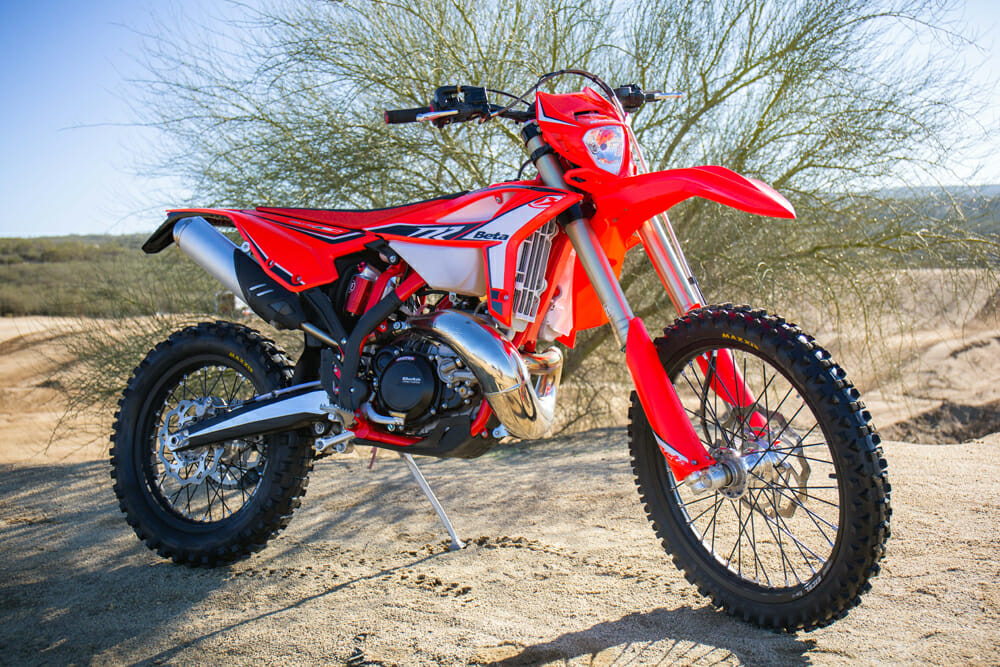 The Beta 300 RR in all its glory. The RR is Beta’s way of offering an “affordable” high-performance trail bike that you can still race.
The Beta 300 RR in all its glory. The RR is Beta’s way of offering an “affordable” high-performance trail bike that you can still race.
2022 Beta 300 RR Review | What Is The 300 RR?
Beta offers a boatload of off-road two-stroke models to choose via four different engine platforms: 125cc, 200cc, 250cc and 300cc. Of these, you have two variants to mull over—RR and Race Edition. The RRs are the base (or standard) models. The Race Editions are the same motorcycles but fitted with a handful of race-influenced upgrades, most notably higher-spec suspension components. The Race Editions are, of course, more expensive.
Today, we’re riding the 300 RR, which retails for $9699, versus the $10,199 300 Race Edition.
Beta’s 300s feature an oil-injected 292cc two-stroke counter-balanced engine with a six-speed transmission and an electric start, with the option for a kickstarter at the time of purchase. One of the things that sets Beta’s 300 two-strokes apart from some of its competitors (namely KTM, Husqvarna and GasGas) is its fueling system—the Beta is carbureted, the others fuel injected.
The Beta’s engine is cradled by steel frame and, in our case with the RR, suspended by Sachs components (versus the Race Edition’s KYB units).
A 2.5-gallon gas tank, by way of a Keihin 36mm carb, fuels the fire, while an 18-inch rear wheel puts the ponies to the ground. The RR is fitted with a headlight and taillight and an enduro meter. Unfortunately, Beta forgot to install handguards at the factory.
Seat height is 36.6 inches and dry weight is a claimed 228 pounds.
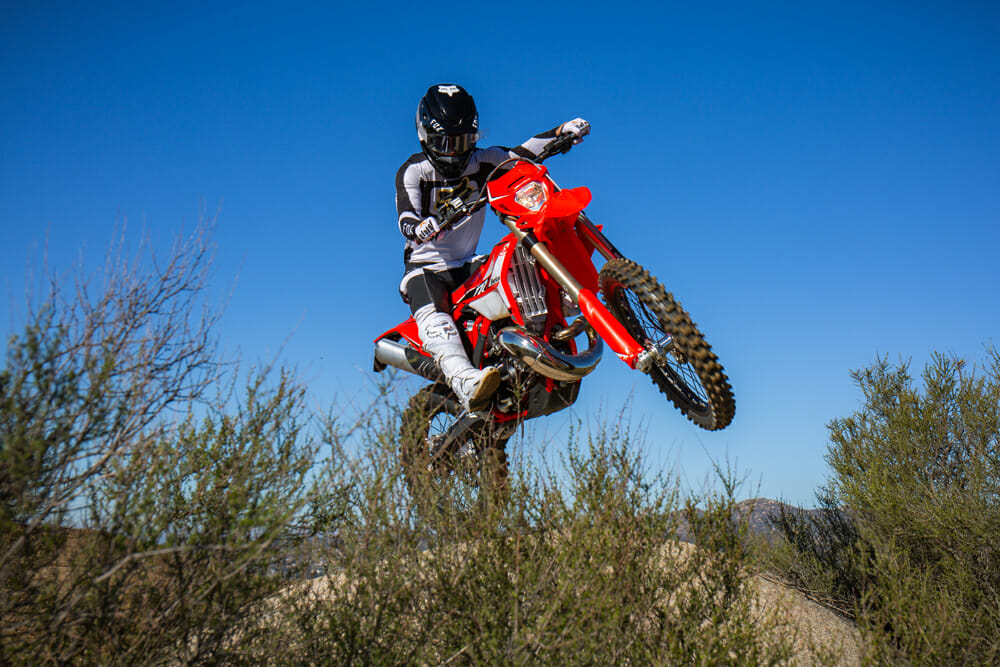 The Beta 300 RR comes fitted with Sachs suspension components versus its pricier 300 Race Edition brother that comes shod with KYB metal.
The Beta 300 RR comes fitted with Sachs suspension components versus its pricier 300 Race Edition brother that comes shod with KYB metal.
2022 Beta 300 RR Review | Happy Trails
To give us added input, we enlisted off-road pro and multi-time Tecate Enduro winner Noah Kepple and took to some local trails that are typical to the West Coast scene—you know sandy, whooped-out single track, lined by jersey-ripping bushes. The girthy powerplant is clearly evident at the first crack of the Beta’s throttle. Underneath you is a strong torquey engine with a profound hit that carries all the way up into the overrev. We’ve said it before and we’ll say it again: a well-tuned 300cc two-stroke can be the “perfect” all-around off-road motorcycle, at least in our opinion. And that opinion hasn’t changed with the extremely potent and rideable Beta 300 RR. With its tractable low-end grunt paired with its pipey mid to top, it can carry you through the most technical of terrain at speed, or at walking pace if need be. The desert gods blessed us with wet dirt and near perfect conditions on our test day, so we were able to really let this motor loose. And we loved every minute of it.
It’s hard to ride the carbureted Beta 300 and not compare it to Austrian TPI technology used in comparable KTM, Husky and GasGas 300s with which we have a lot of experience. Although we did not compare these motorcycles back-to-back, the Beta has a noticeably livelier and snappier feel than the TPI bikes, which tend to feel a little more on the “boring” or “dull” side in comparison when you really open the throttle versus carbureted two-strokes like the Beta. Whether that’s a good thing or not is pretty much a personal preference, but the TPI bikes might be a little more predictable when you grab a handful of throttle rapidly.
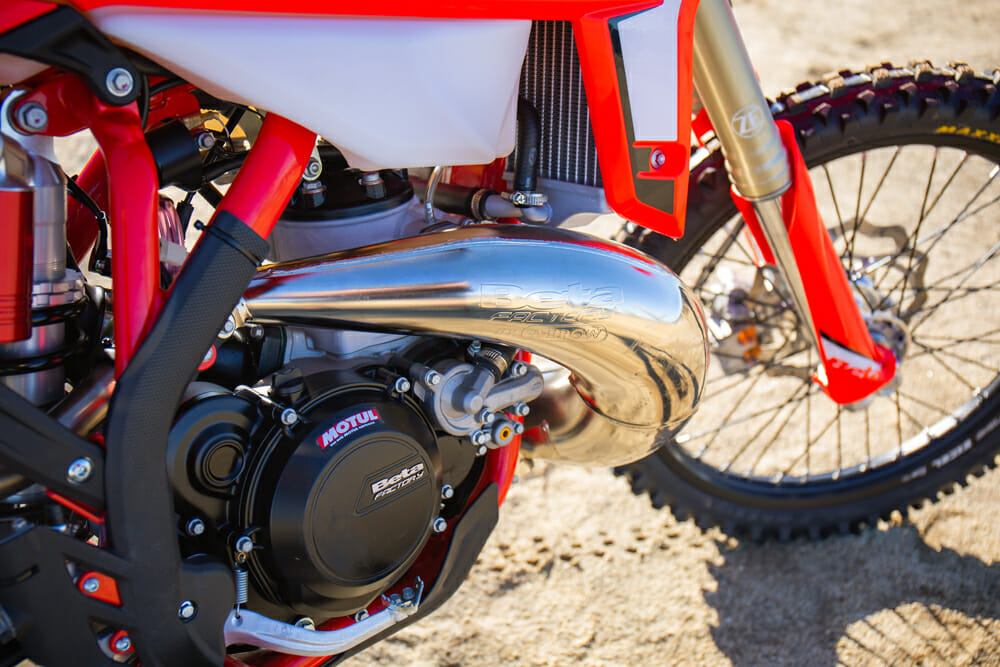 Ahh, the motor. Here is where the Beta 300 RR two-stroke really shines. Not only does it perform well, but it also features stuff like electric starting, a hydraulic clutch and oil injection, all things we love in a dirt bike.
Ahh, the motor. Here is where the Beta 300 RR two-stroke really shines. Not only does it perform well, but it also features stuff like electric starting, a hydraulic clutch and oil injection, all things we love in a dirt bike.
Still, both style of bikes are generally easy to manage, perhaps just a little more so on the TPI rides. The Beta, however, simply rips, with character like a carbureted two-stroke motocross bike. The Beta 300 is fitted with two ignition map modes, adjustable via a button located in front of the fuel tank and is identified with a picture of a sun (standard) and a rain cloud (toned down for slippery conditions). You will notice a slight difference between the two settings. You can fine tune power delivery even more via the Beta’s adjustable power-valve system.
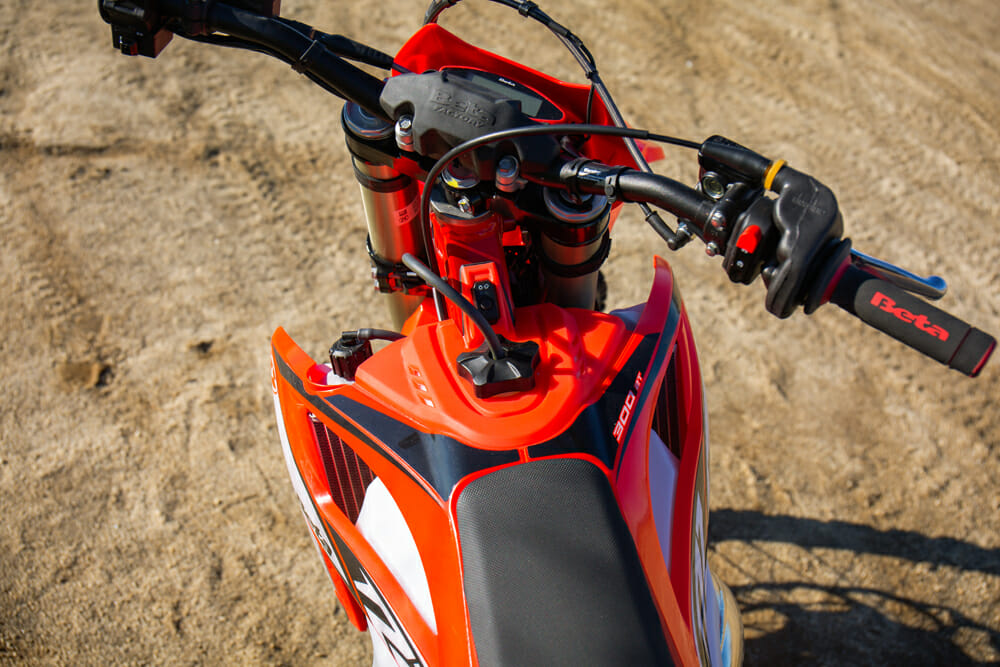 The Beta 300 RR stashes the two-position ignition map switch above the gas cap, leaving more room on the bar for accessories like handguards… which you’ll need to bolt on yourself.
The Beta 300 RR stashes the two-position ignition map switch above the gas cap, leaving more room on the bar for accessories like handguards… which you’ll need to bolt on yourself.
What the Beta might gain on the competition in the engine department, it loses in the suspension department. The 300 RR relies on a 48mm toolless adjustable Sachs ZF spring fork and an adjustable aluminum shock body in the back. For us, the suspension is simply just too soft in every way. It dives under braking, and the fork bottomed multiple times on us in typical second- and third-gear whoop sections. We understand not every off-road trail looks and feels like the ones we rode, but the front and rear suspension, we felt, also lacked balance, and perhaps wasn’t thoroughly tested together before being let loose on the public. On slow-speed mountain single-track trails, the Beta’s suspension is fine, but be prepared to do some adjustments for faster, more wide-open terrain. We know from experience that Sachs makes quality equipment, so we’re confident you can make the Beta’s suspension work much better than stock with a little bit of time and effort.
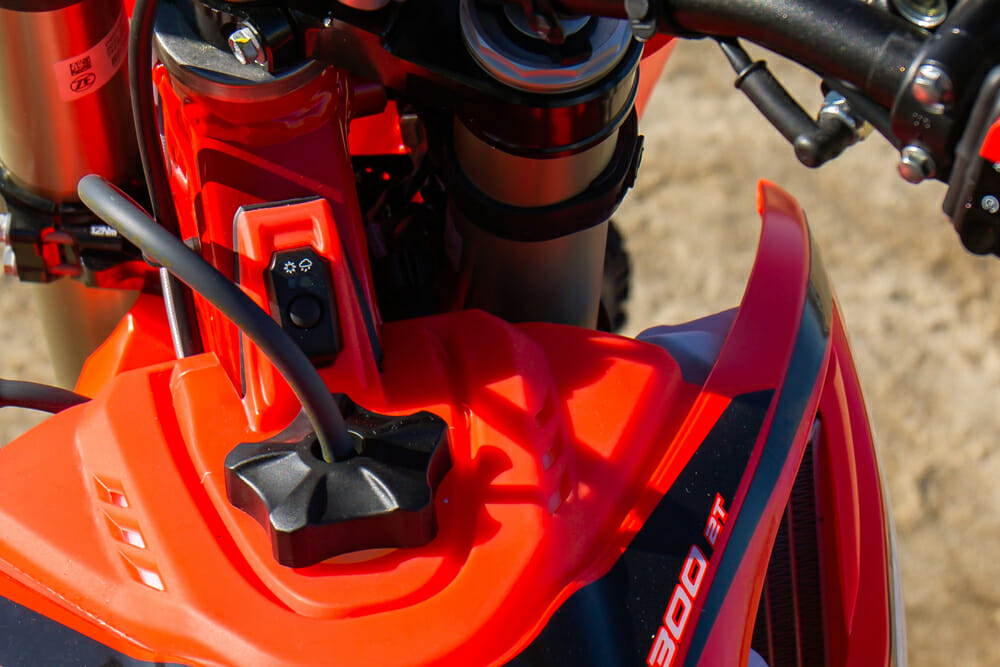 The Beta 300 RR has two power modes: sun for standard and the rain cloud for slippery conditions.
The Beta 300 RR has two power modes: sun for standard and the rain cloud for slippery conditions.
Aside from the suspension, the Beta looks and feels top notch. The Brembo hydraulic clutch has nice a light pull and offers great feel, while the Nissin Brakes perform well, too, (both front and rear) with plenty of power and predictability.
We love the Beta’s oil-injection system; it makes life way simpler. No more mixing gas, or remembering which fuel can is which. Straight gas in the tank, and oil goes in the reservoir located underneath the seat (which can be removed without tools) and won’t need refilling until after you have burned through three to four tanks of gas. A warning light shines in case you forget.
The easy-access airbox, which requires zero tools to get to the air filter, also helps makes living with the Beta just that much easier.
In the visual department, the Beta is a looker. The red plastic, red frame and black excel wheels really tie the whole package together.
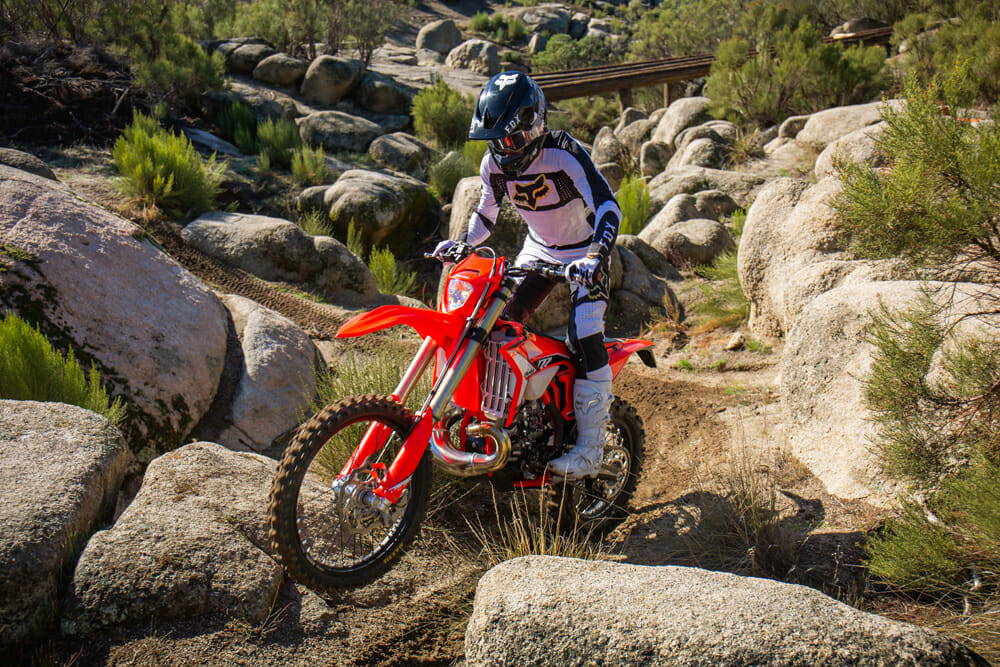 For those not sold on the feel of fuel injected (or should we say TPI) two-strokes yet, you’ll be pleased to know the Beta is still carbureted.
For those not sold on the feel of fuel injected (or should we say TPI) two-strokes yet, you’ll be pleased to know the Beta is still carbureted.
Both of our test riders were impressed with the Beta 300 RR for what it’s designed to do. The fortitude of the 292cc powerplant, the hydraulic clutch, electric starter, oil-injection system, and the finished package were all standout features and make it fun to live with. However, the faster we rode it, the less satisfied we were with it mainly because of its out-of-whack suspension. But that’s where the Race Edition comes in. However, for the hard-core, or even casual, trail rider that likes to sign up for the occasional enduro (but not before a date with their favorite suspension tuner,) the RR is without question a serious off-road contender to consider. CN
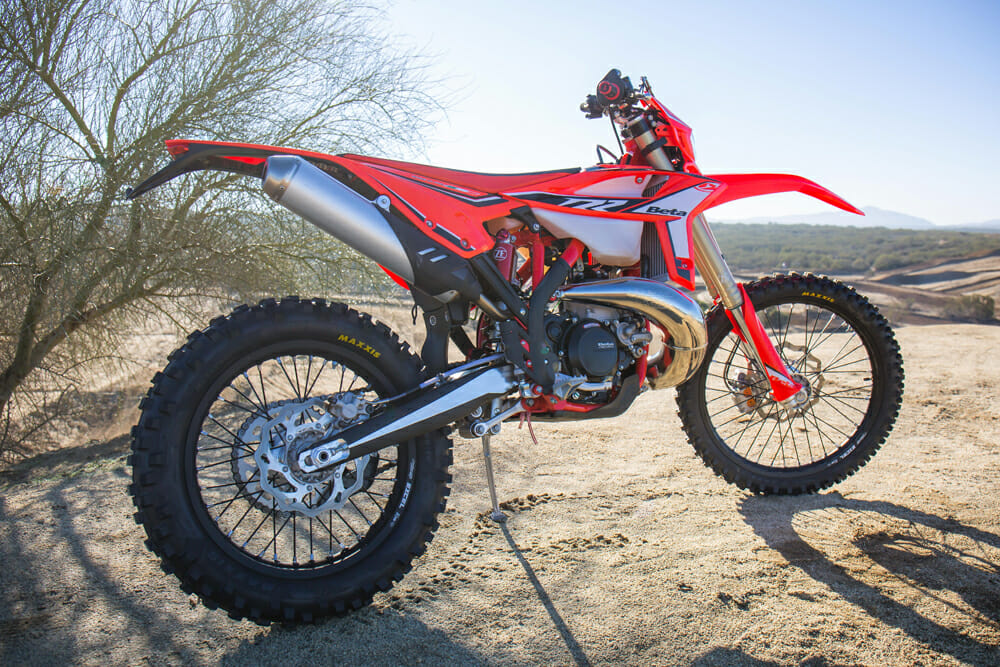
2022 Beta 300 RR Specifications
| MSRP: |
$9699 |
| Engine Type |
2-stroke, single, adjustable powervalve |
| Cooling System: |
Liquid |
| Displacement |
292.6cc |
| Bore x Stroke |
73 x 69.9mm |
| Compression Ratio |
11.63:1 |
| Starting System |
Electric, (kickstarter optional) |
| Lubrication |
Electronic oil injection |
| Fueling |
Keihin PWK 36mm |
| Transmission |
6-speed, hydraulic clutch |
| Frame |
Molybdenum steel, double cradle w/ quick air-filter access |
| Front Suspension |
48mm Sachs open cartridge with compression, rebound and spring preload adjustment |
| Rear Suspension |
Aluminum body Sachs shock, w/ adjustable rebound and high/low speed compression |
| Front-Wheel Travel |
11.6 in. |
| Rear-Wheel Travel |
11.4 in. |
| Front Wheel |
21 in. |
| Rear Wheel |
18 in. |
| Front Tire |
Maxxis Maxx Enduro Enduro Competition |
| Rear Tire |
Maxxis Maxx Enduro Enduro Competition |
| Front Brake |
260mm floating rotor, Nissin caliper |
| Rear Brake |
240mm rotor, Nissin caliper |
| Wheelbase |
58.3 in. |
| Seat Height |
36.6 in. |
| Ground Clearance |
12.6 in. |
| Fuel Capacity |
2.5 gal. |
| Weight (curb, claimed) |
228 lbs. |
